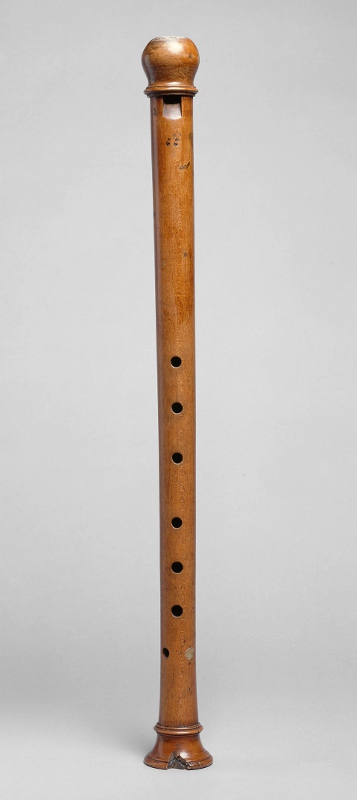PHILIPPE BOLTON
HANDMADE RECORDERS & FLAGEOLETS
THE TENOR RECORDER N° SAM 148
in the Kunsthistorisches Museum in Vienna

© khm |
This instrument was probably made at the end of the XVIth or the beginning of the XVIIe century. It is no longer in its original state
because the beak and foot were modified some time after it was made in order to make it look more "baroque" at a time when
the simple design of the Renaissance recorders was no longer fashionable. The windway section was probably shortened to make this operation easier.
It must have been a good instrument to have been thus adapted to the taste of a later period.
|
The bore is similar to that of Claude Rafi's recorders, with a long cylindrical section and a choke towards the bottom, near the last hole, enabling the use of the
third register for playing the top notes of the second octave, as on the recorders made many years later.
The name of the maker is unknown. His instruments were signed with this stamp:  © khm
© khm
The Kunsthistorisches Museum in Vienna owns two other instruments by this maker which have not been modified like the tenor: a descant (SAM 130) and an alto (SAM 140).
|
You can listen to a copy of this instrument here: |
